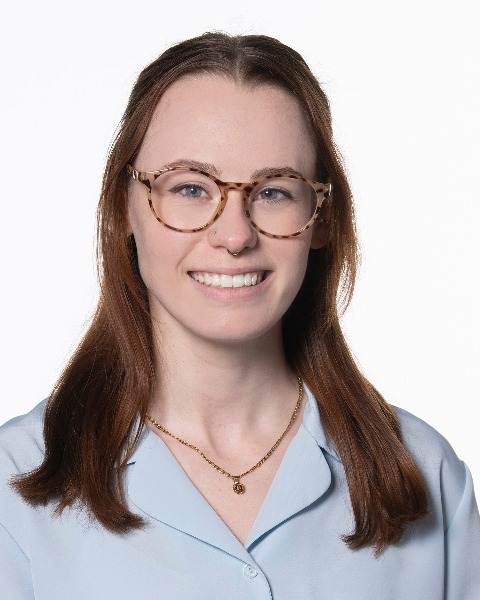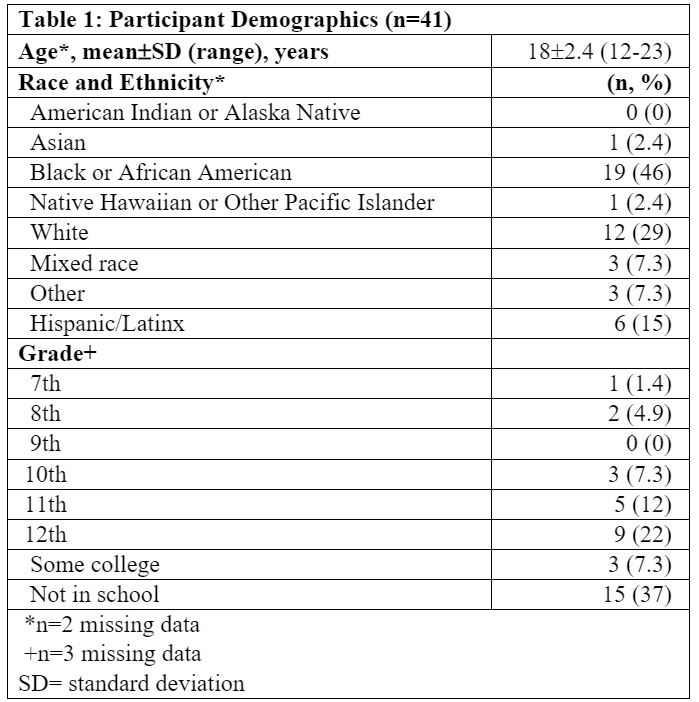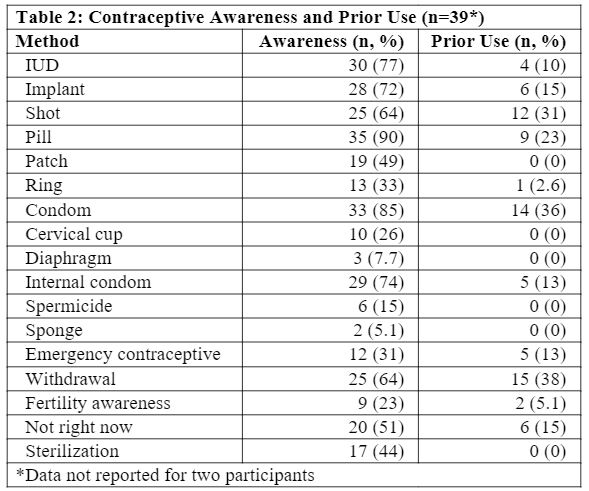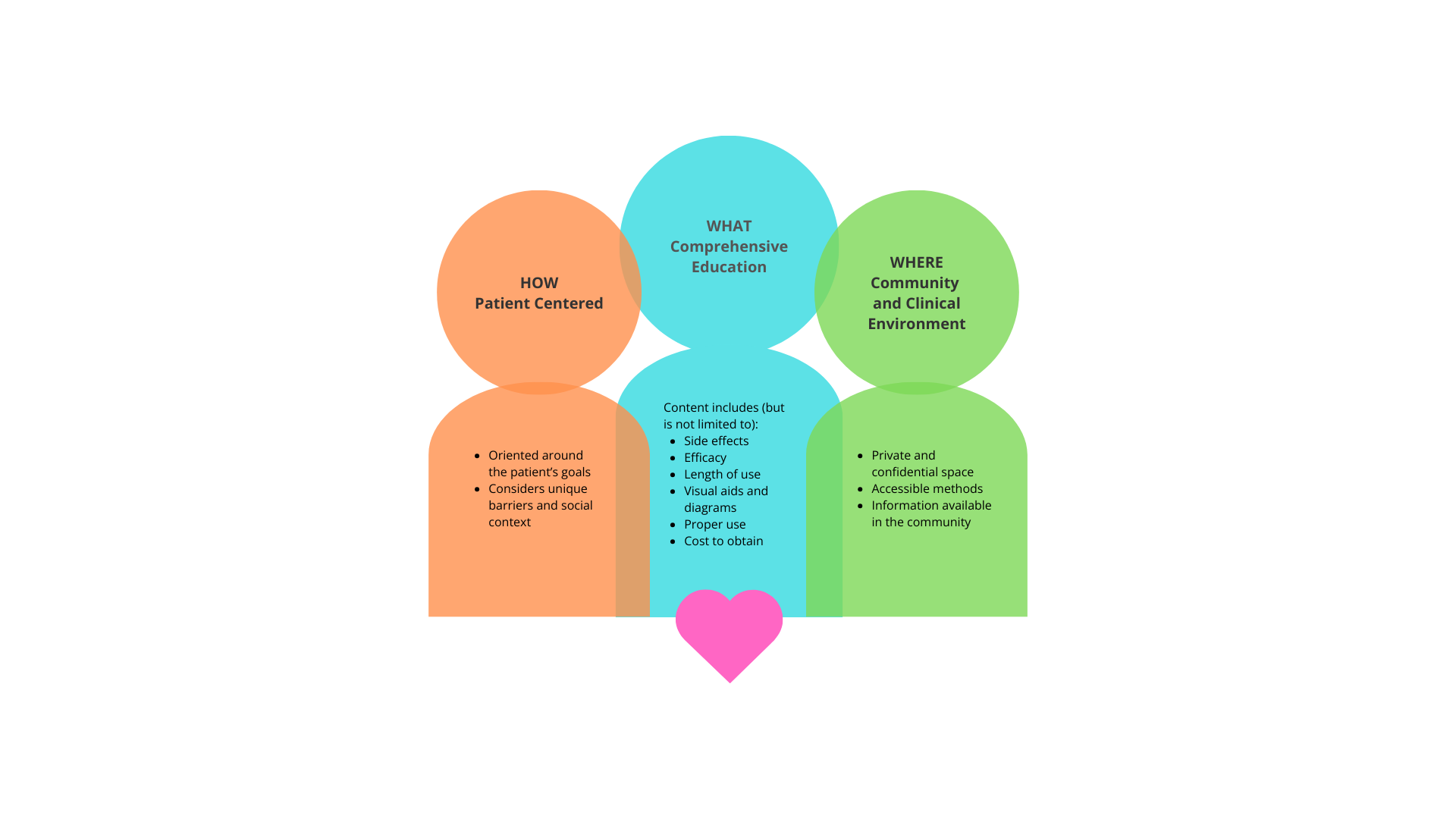Adolescent Medicine 6: Sexual & Reproductive Health
Session: Adolescent Medicine 6: Sexual & Reproductive Health
152 - CHOICE-AYA: Adapting an evidence-based contraceptive counseling approach for adolescents and young adults (AYA) experiencing homelessness
Monday, April 28, 2025
7:00am - 9:15am HST
Publication Number: 152.4197
Mariah Brewe, Children's Mercy Hospitals and Clinics, Kansas City, MO, United States; Anna E. Burns, Children's Mercy Hospitals and Clinics, Leawood, KS, United States; Nik M. Schuetz, Children's Mercy Hospitals and Clinics, Kansas City, MO, United States; Taylor Stephens, University of Kansas School of Medicine, Kansas City, KS, United States; Emma Francis, University of Kansas School of Medicine, Roeland Park, KS, United States; Haylie Yost, Children's Mercy Hospitals and Clinics, Overland Park, KS, United States; Ileana Cepeda, Children's Mercy Hospitals and Clinics, Wichita, KS, United States; Stephani Stancil, Children's Mercy Hospitals and Clinics, Kansas City, MO, United States

Mariah Brewe (she/her/hers)
Clinical Research Coordinator
Children's Mercy Hospitals and Clinics
Kansas City, Missouri, United States
Presenting Author(s)
Background: Adolescents and young adults (AYA) experiencing homelessness are at an increased risk of reproductive coercion, unintended pregnancy, and negative interactions with healthcare. Current evidence-based contraceptive counseling employs an efficacy-first approach successful at reducing rates of unintended pregnancy. To support trauma informed reproductive autonomy and positive sexual and reproductive health (SRH) experiences in AYA experiencing homelessness, a patient-centered adaptation may be necessary.
Objective: This study aimed to adapt the evidence-based, efficacy-first CHOICE contraceptive counseling approach for AYA experiencing homelessness.
Design/Methods: Focus groups were conducted with AYA experiencing homelessness who expressed interest in current or future contraception. Participants provided deidentified demographic data and information on their contraceptive awareness and prior use. Semi-structured discussions covered 1) attitudes/opinions on contraception and prior SRH, 2) presentation of published CHOICE and clinically derived patient-centered counseling scripts, 3) feedback and recommendations for adaptation. Qualitative data and adapted scripts were presented in subsequent groups for discussion and member checking. Analysis of transcripts was done in Dedoose (v9.2.12) and guided by Patient Centered Communication and Social Cognitive Theory.
Results: Four focus groups involved 41 AYA experiencing homelessness (Table 1, 2), who guided the development of the adapted CHOICE-AYA approach, including counseling script. Participants described negative prior SRH experiences using shame and scare tactics, leading to a lack of awareness or misinformation regarding pregnancy and contraception. AYA recommendations to inform SRH were synthesized into three themes (Fig. 1): The How – patient-centered communication and rapport that fosters trust and respect, 2) The What – comprehensive reproductive content (e.g., consent, STI testing, benefits and side effects of hormonal and non-hormonal methods, family planning) for all patients that supports autonomy and informed decision making, 3) The Where – confidential and inclusive spaces that increase access and extend to the broader community to meet time-sensitive needs (e.g., emergency contraception).
Conclusion(s): AYA experiencing homelessness guided the development of a patient-centered contraceptive counseling approach by providing insight into approaches that support positive SRH experiences. Future work can facilitate implementation of this CHOICE-AYA approach for youth experiencing homelessness.
Table 1: Participant Demographics

Table 2: Contraceptive Awareness and Prior Use

Figure 1: Themes for Improving Contraceptive Counseling for AYA Experiencing Homelessness


